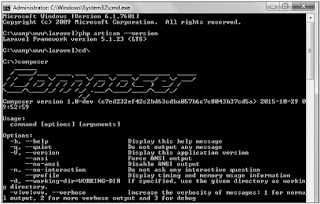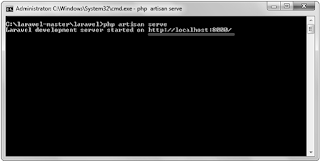For managing dependencies, Laravel uses composer. Make sure you have a Composer installed on your system before you install Laravel.
Step 1 − Visit the following URL and download composer to install it on your system.
https://getcomposer.org/download/
Step 2 − After the Composer is installed, check the installation by typing the Composer command in the command prompt as shown in the following screenshot.

composer create-project laravel/laravel –-prefer-distStep 4 − The above command will install Laravel in the current directory. Start the Laravel service by executing the following command.
php artisan serveStep 5 − After executing the above command, you will see a screen as shown below −



0 comments:
Post a Comment